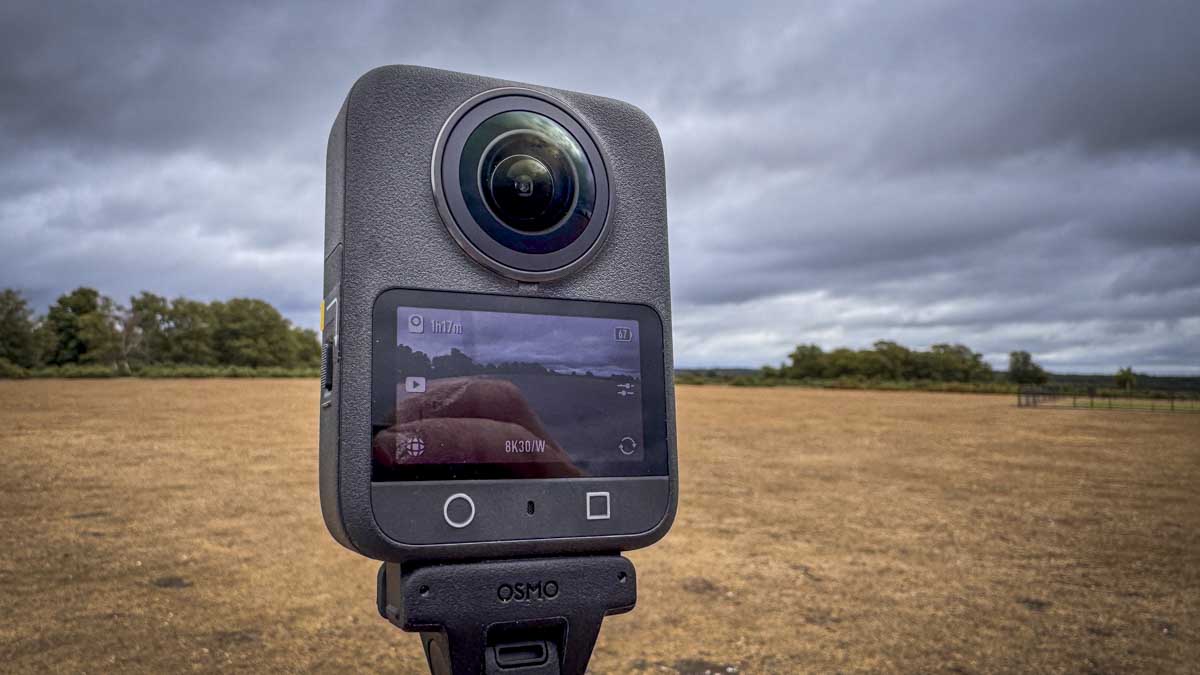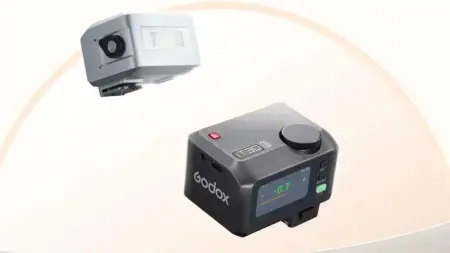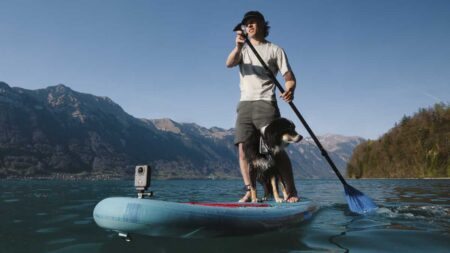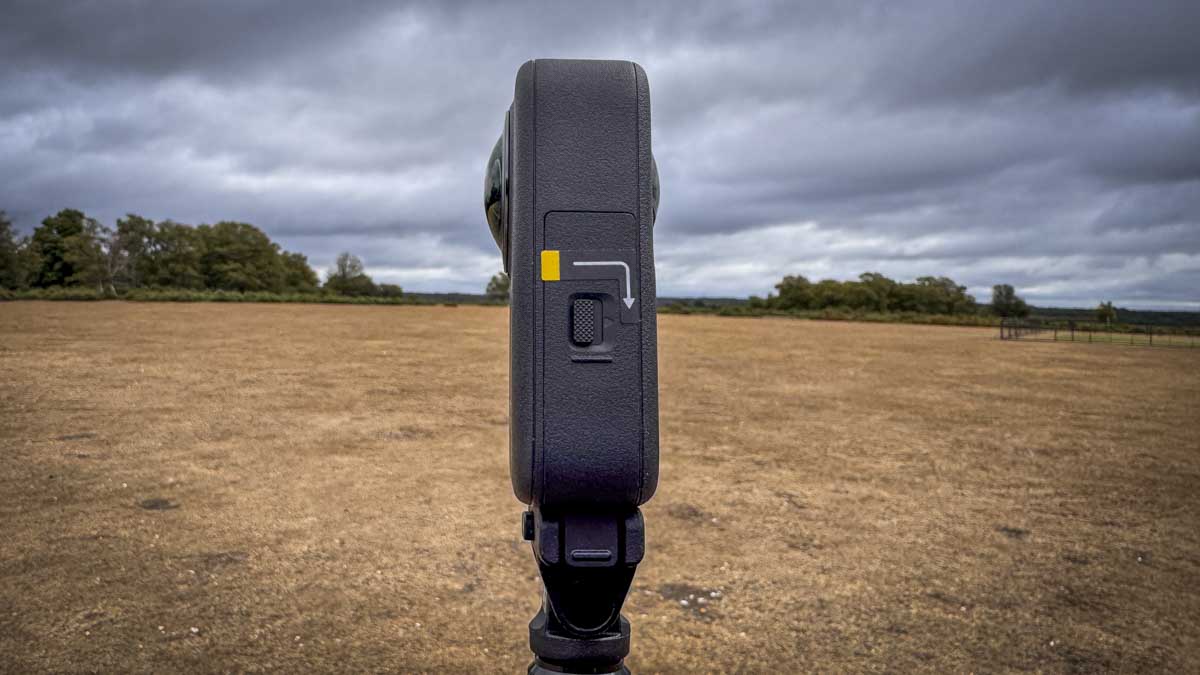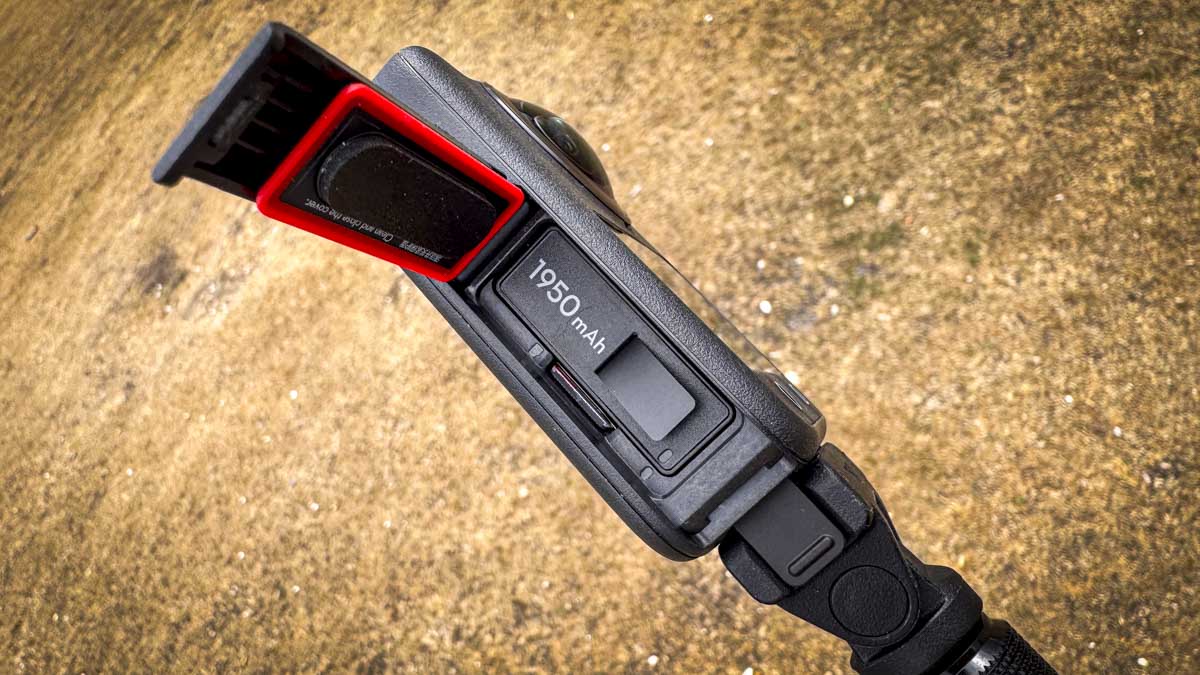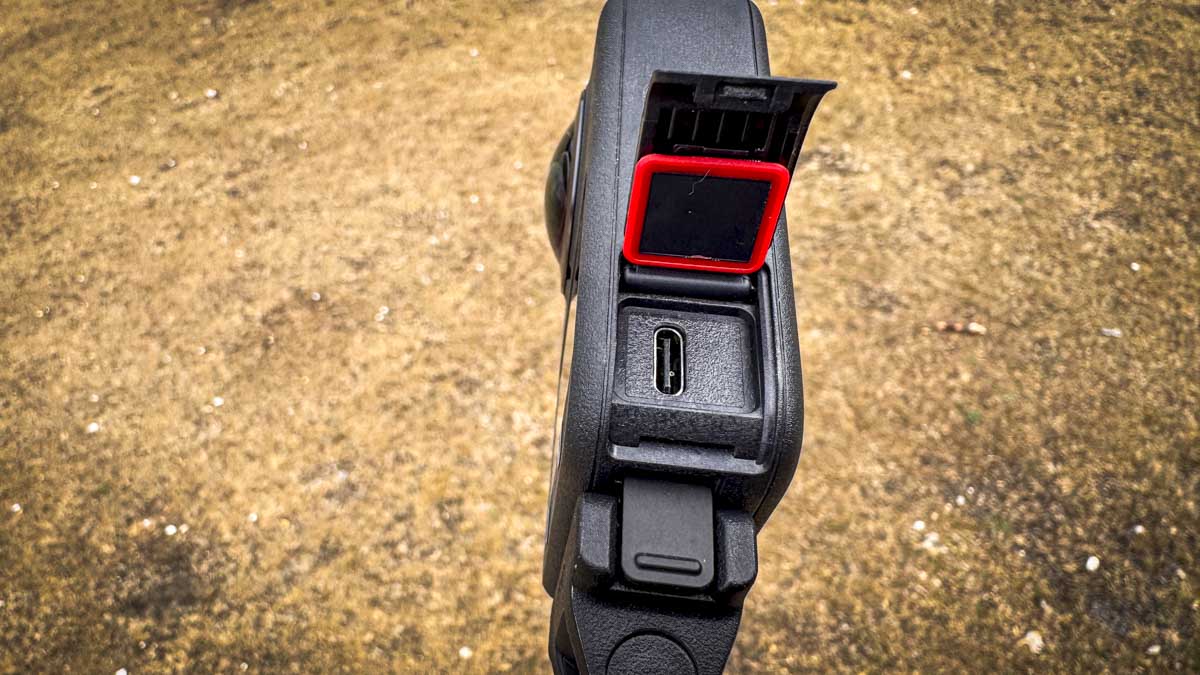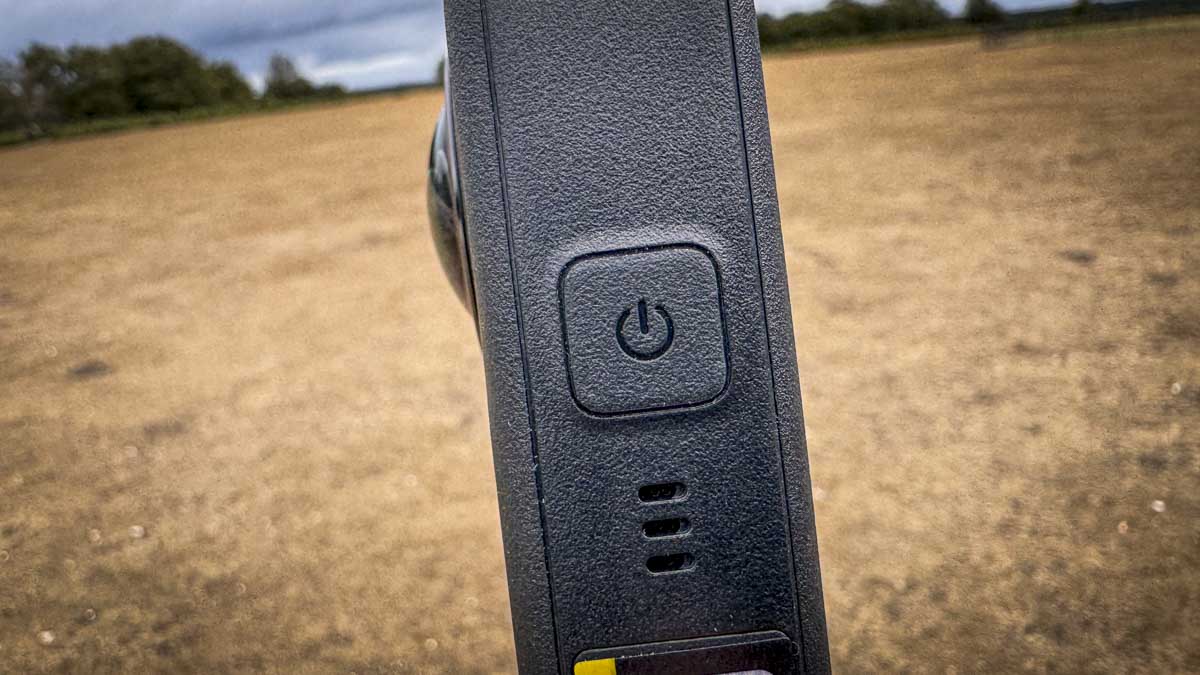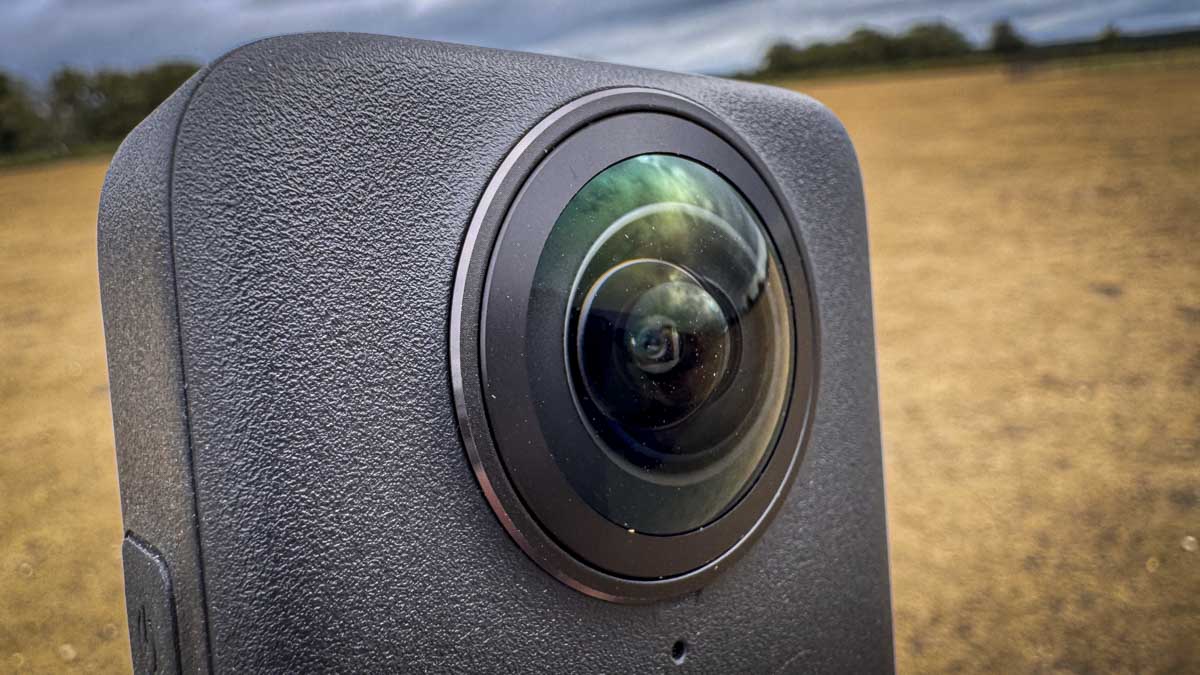Getting up and running with the DJI Osmo 360 is straightforward, with the usual process of charging the batteries. In the case of my review unit, that was in the battery case that can contain up to three batteries and connect to a power source via a USB-C port on the front of the case. There are simple green lights that flash as the battery is charging and go solid green once the battery is charged.
Inserting the battery is equally easy, with a port on the side opening with the securing lock. The battery slips in, and the microSD card can slot in at the same time. Once that’s done, you’re almost set to go. The power button for the camera is just on the side; a long press will get the camera started, and then you have to run through DJI’s usual activation process, which is a little annoying, although it does allow you to skip it three times before that activation is required.
Once you’re in, use is extremely easy, with the circle button underneath the LCD screen to start and stop recording, and the button to flip the preview from the rear to the front lens.
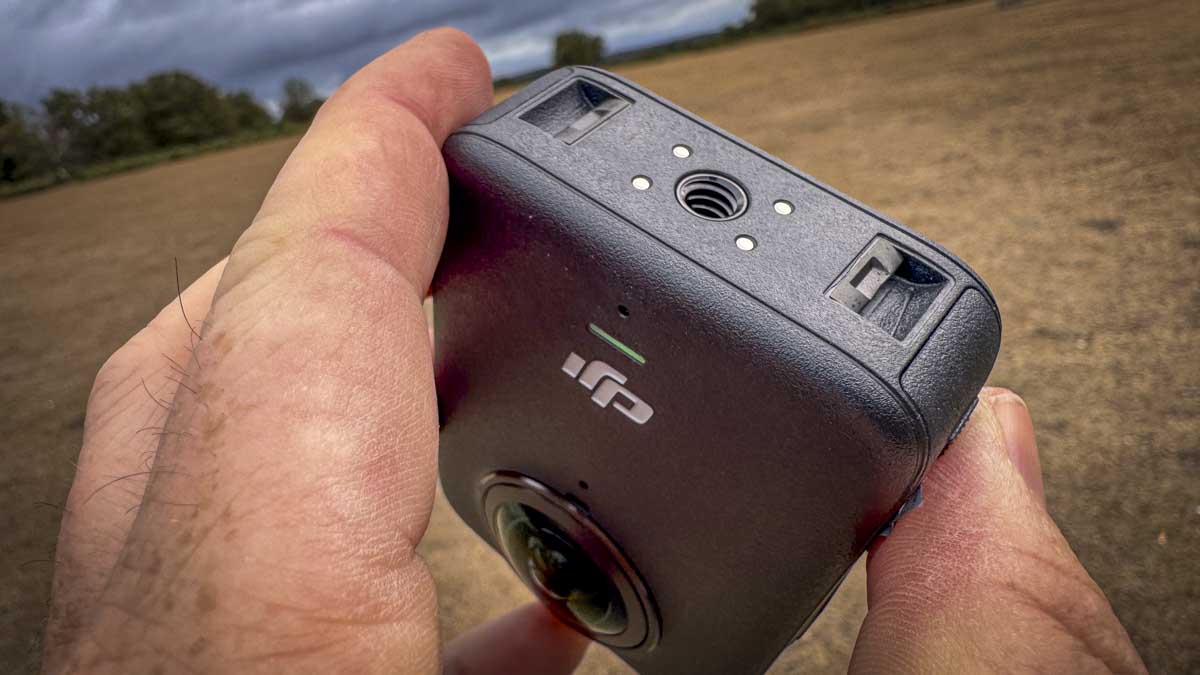
With a 360° camera, while you can film by just holding the device, it is actually better to mount it on a pole. The simple basic pole and the longest three-metre option, which is far more sturdy, are made from carbon fibre, and for most of the review process, I swapped between the two due to the larger pole being a bit more weighty but still relatively compact and lightweight considering its huge length.
Connecting up to the Mimo app was also easy and quick enough on the road, as usual. Wireless connection definitely stands out once again. Flipping through options and settings is all easy enough, and while I still don’t feel that it is as streamlined as others I’ve looked at recently, it certainly does pack in a lot of features and gives you plenty of options to get started.
Starting and stopping recording was incredibly easy, and switching on RockSteady and HorizonSteady makes a huge difference to the quality of the video, essentially by smoothing out all the inevitable camera shake and horizon so you feel less disoriented as you review the 360° footage. Having that extra field of view really highlights any camera shake or wonky horizons.
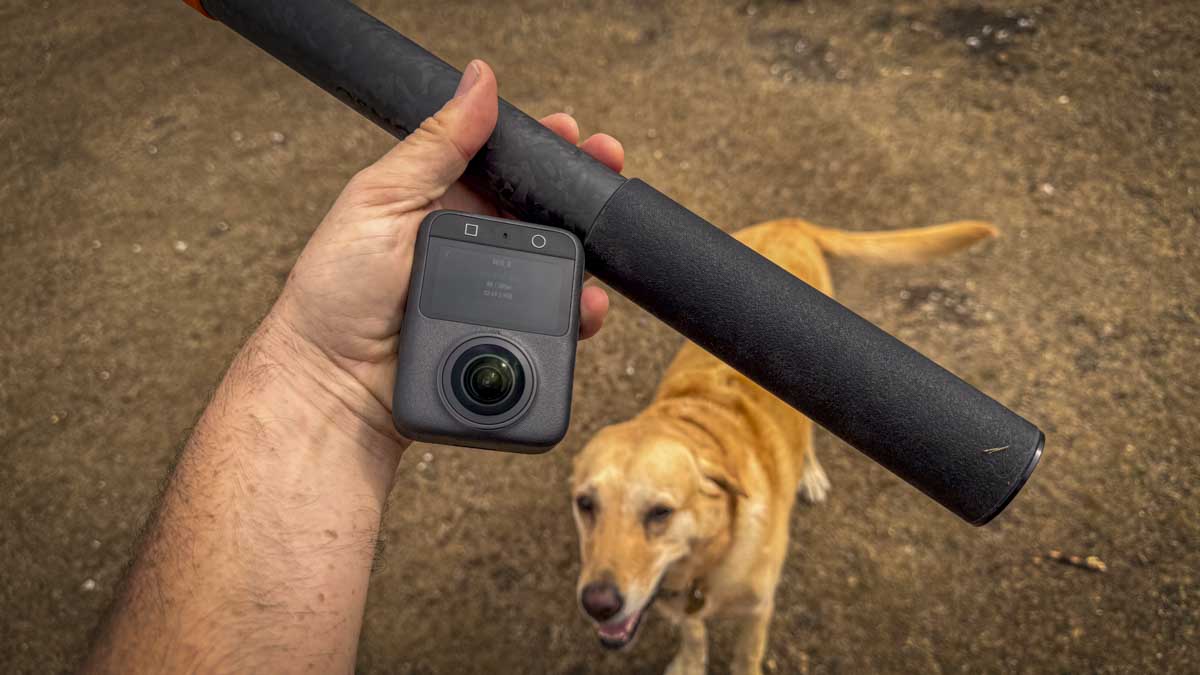
What’s really apparent from the outset is just how smooth the stabilisation of this 360° footage is. The stitch between the two lenses is exceptionally good, and it is very difficult to see where the two streams of footage actually meet.
Throughout the recording, I was impressed with the battery life, able to record minutes of continuous footage before the low power warning starts flashing. There is an additional battery base that you can use alongside the camera, which will extend that to 180 minutes, although even with a relatively high-powered workstation, editing that volume of 360° footage is going to be quite a task.
In bright and light conditions, which thankfully were most of the time during the test, the footage looks bright and vibrant with plenty of tone and colour, and even as I went into the trees, where other 360 cameras often struggle, the footage still held good, clear and crisp. It worked hard to maximise quality in low light conditions, and while you can see a drop in quality, it’s not as pixelated or lacking the detail that some of the competition often have.
While shooting in 8K 50 frames per second is impressive, there are plenty of other resolution options, and one of the features that did really impress me during the test was the slow-motion ability, where you can slow footage shot at low resolution by up to four times, essentially shooting at 120 frames per second and then reducing this to 30 per second during playback. Here, once again, the footage looks really good quality, and while we were pushing it a bit by cramming in those extra frames, overall, the tone, clarity, and detail were all well balanced.
An important part of the Osmo 360 camera is the Mimo app; this is nicely designed and relatively easy to use, and once the app is loaded, it very quickly finds the camera and only requires you to connect when ready.
Once you’re into the app, you just need to push the camera icon, click okay to confirm the connection, and you’re in to the live view screen with the ability to adjust and access all of the options and settings, including starting and stopping recording.
One thing I really like about the app, as is quite common with this style of device, is that you can just touch the screen to quickly rotate 360° around the scene, and across the bottom there’s a good range of different modes including hyperlapse, timelapse, vortex, selfie mode, super night video and photo, all giving you access to plenty of additional features, flexibility and fun. My personal highlight was vortex mode, which essentially gives you the ability to shoot vortex footage.
One feature I was really looking forward to trying was the invisible pole; however, at present, I couldn’t get that working with either of the poles, and they were still very much apparent. I will update as soon as I get this working.
When it came to using both the app and the desktop editing application, these were both straightforward and in both, a quick tutorial led to the basic functions and features. While it isn’t the most streamlined of all apps I’ve seen, it is well balanced, but more than anything, it gives you a really good insight into what is possible, and you should be able to sit down and get started with editing your 360° footage in relatively quick time.
At the end of the test, I was really impressed with the DJI Osmo 360 camera. It is a robust model, and the fact that it utilises the same magnetic mount as the DJI action cameras means that it’s fully compatible with a huge ecosystem of accessories and mounts. The other thing I really liked was the fact that you can use it with the DJI Mic 2, so if you want to create professional 360° footage with decent audio, then it’s very quick and easy to do that with minimum fuss, although it will take a little bit of time to work out how to get the mic fully integrated in with the system. Once launched, it will obviously be a little bit easier.
Overall, when it comes to 360° cameras, these are some of the best quality visually that I’ve come across, but when you stack them up against the GoPro Fusion 360 and the Insta360 1-inch, the competition suddenly gets extremely tough. So, what I’d say at present is, if you’re into the DJI ecosystem, then this is the 360 camera you want to go for; however, if you are into GoPro and their system, then the Fusion is still superb. Likewise, if you use the Insta360, then their system is equally superb, and as all three cameras are roughly the same price, the choice really comes down to your familiarity with each manufacturer.
